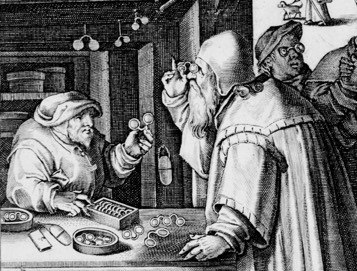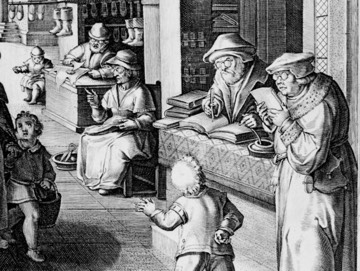Sign up for FlowVella
Sign up with FacebookAlready have an account? Sign in now
By registering you are agreeing to our
Terms of Service
Loading Flow


During the 15th and 16th centuries, Florence was the center for both the making of optical instruments and theoretical research on optics and perspective. In the mid-15th century, spectacle makers and their customers were already aware of the principle of diminishing visual acuity in five-year intervals from the age of thirty onwards, and had at least an elementary knowledge of progressive myopic stages. The specialized technique in grinding glasses for such precise purposes, however, did not make eyeglasses an expensive commodity. Instead, they were both collectible as prestigious pieces of craftsmanship and fashion and useful as affordable products for everyday use.


BACK
Bow spectacles are eyeglasses that would stay on the nose without further support. This new development in spectacle-making aided people from all sectors of the society, allowing artisans to work with their hands while visually aided (above, left), and scholars to take scribal notes while reading (above, right).
The two scholars in this image show how a change in instrument design corresponded to the invention of the printing press. The multiplication of printed texts in the society shifted reading habits in early modern Europe, demanding better literacy from everyone while increasing the need for reading glasses. By including the two scholars, the engraver asserts the centrality of print-making to the technological inventions of the age.

1

2

3

4

5

6

7

8

9

10

11

12

13

14

15

16

17

18

19

20

21

22

23

24

25

26

27

28

29

30

31

32

33

34

35

36

37

38

39

40

41

42

43

44

45

46

47

48

49

50

51

52

53

54

55

56

57

58

59

60

61

62

63

64

65

66

67

68

69

70

71

72

73

74

75

76

77

78

79

80

81

82

83

84

85

86

87

88

89

90

91

92

93

94

95

96

97

98

99

100

101

102

103

104

105

106

107

108

109

110

111

112

113

114

115

116